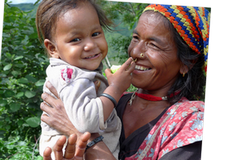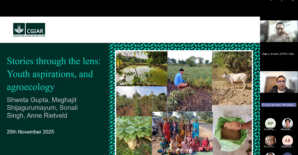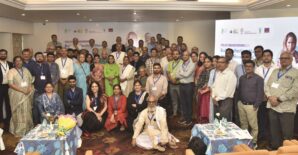
Source: Kenda Cunningham
Parul Tyagi is Research Analyst with PHN in New Delhi office
Improving agricultural productivity can be an effective way for developing countries to achieve economic growth and reduce poverty. However, can agricultural development translate into reductions in undernutrition? In Nepal—where agriculture is the major source of livelihood, and undernutrition continues to be a staggering problem for both children and women of reproductive age—this is a serious question.
A new discussion paper, Women’s Empowerment in Agriculture, Production Diversity and Nutrition: Evidence from Nepal suggests that gender equity can bridge this gap. In this paper, the authors examined the extent to which women’s empowerment in agriculture and production diversity influence maternal and child nutrition in rural Nepalese households. To determine this, they use data from a baseline survey conducted as part of the evaluation of Suaahara, a 5 year multisectoral intervention in Nepal aiming to improve health and nutrition among rural families.
They found that in households producing a wide variety of foods, maternal dietary diversity and maternal body mass index (BMI) were higher. The results for children are less clear, but production diversity was also positively associated with dietary diversity for children under two years of age. For children between two to five years of age, production diversity was associated with higher weight-for-age, weight-for-height, and height-for-age.
The authors also examined the relationship between key indicators of women’s empowerment in agriculture (based on the Women’s Empowerment in Agriculture Index ) and maternal and child nutrition. Certain indicators of women’s empowerment, in particular autonomy in agricultural production (e.g. what crops to grow) was associated with better maternal and child dietary diversity. Autonomy in agricultural production was also positively associated with children’s height-for-age Z scores. This could be because women who have autonomy in agricultural production may also have autonomy in determining decisions related to food consumption and children’s care.
Surprisingly, higher maternal workload also seems to be beneficial: more hours spent by the mother in paid and unpaid work was positively associated with both maternal and child dietary diversity and children’s height-for-age Z scores. This points to an interesting ambiguity about women’s workload: the income effect may be strong enough to mute the negative trade-offs in care she is able to provide. However, higher workload also means higher energy expenditures. Unsurprisingly, women’s workload was not significantly associated with BMI of the mothers.
Although the authors’ conclusions are based on a one-time survey and many factors are in play, the analysis suggests that interventions to increase women’s agency and capability to make agricultural decisions may provide opportunities for more directly engaging women in agriculture, and in turn, have a powerful influence on nutrition.


